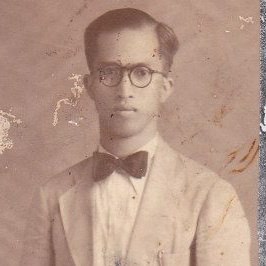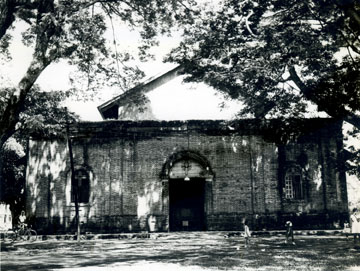Dodong’s Soap Opera (Inquirer WWII TRUE STORIES CONTEST WINNER)
Filomeno “Dodong” Avanceña Bautista Jr. was 14 and a second year high school student when the war broke out between Japan and the United States on Dec. 8, 1941.
At Misamis Oriental High School that Monday morning, as he stood waiting for the flag ceremony to begin, students and teachers seemed lost and disoriented.
He noticed that people were saying goodbye to one another, acting as if they would not meet again. He kept hearing about the surprise bombing by the Japanese of the US naval facility at Pearl Harbor in Hawaii and the subsequent bombing of American installations in the Philippines.
“We were all told to go home and join our families,” Dodong recalled. But members of the Boy Scouts of the Philippines, of whom he was one, were told to wear their uniforms and help in various civic activities, like directing traffic in what was then formally known as Cagayan de Misamis.
Soon Cagayan, the capital of Misamis Oriental, was involved in the war. Citizens volunteered as peace officers, air raid wardens and coast watchers. By then the army and police were preparing for the Japanese invasion.
All business establishments in the vibrant commercial hub of Misamis Oriental closed shop. Except for civilian volunteers, no one was allowed on the streets.
Heads of families scrambled to procure food supplies and essential items for their households in preparation for evacuation to rural areas.
“There were two activities that were prevalent during that time—profiteering and evacuation,” Dodong said.
Panic gripped the citizenry of the town. The government ordered nightly blackouts. Army trucks and commandeered buses rumbled in the darkness as the military mobilized.
Private vehicles were also commandeered by the authorities. Establishments owned by the Japanese in Cagayan were looted and closed, their owners arrested by the authorities.
Within a few weeks, order and stability in Cagayan were gone. Many families had left and moved to the rural areas.
Dodong’s father also decided that it would be safer for his family to leave Cagayan. In May 1942, the family moved to their farm, some 10 kilometers away from the town center of Balingasag, also in Misamis Oriental (46 km from Cagayan).
The family stayed on the farm for several months until an indigenous tribe, the Magahat, forced them to move to the town proper for their safety. A few days before, they had heard that a family that sought refuge in a rural area not far from where they were had been massacred by the Magahat.
The burning of a Balingasag Church
In Balingasag, Dodong would come into contact for the first time with Japanese soldiers, an encounter he would never forget. By this time, the US Armed Forces in the Far East (Usaffe) had been largely subdued.
The first Japanese soldiers to arrive in Balingasag were part of Task Force for the Pacification Group. They were headed by Captain Okumura, an English-speaking, US-educated officer.
Dodong remembered him as looking dignified and possessing a very strong personality. The task force was accompanied by Filipino USAFFE officers, led by Capt. Jesus Yamut.
At about the same time, a guerrilla group was forming in the area. The less than a hundred armed fighters were headed by USAFFE officers Captains Clyde M. Abbott and Pedro Collado.
The guerrillas would later meet the Pacification team of Okumura and two Japanese soldiers. They tried to arrest the Japanese but Okumura resisted and attempted to evade capture by hiding inside the Santa Rita parish church in Balingasag.
Guerrillas gathered outside the church and soon there was an exchange of gunfire. The Japanese were outnumbered but the old church was as strong as a fortress.
The guerrilla officers decided to burn down the church to flush out the Japanese, despite the objections of Fr. Clement Risarcher, SJ, the parish priest.
As the church burned, Okumura and his men went up to the belfry. Dodong, who lived very near the church, saw Okumura and his companions jump out of the burning church and try to hide behind an acacia tree. But the guerrillas repeatedly fired at them and all three were killed.
“Captain Okumura’s life ended on top of a wheelbarrow… where he was mutilated,” said Dodong.
The guerrillas, it seemed, did not plan to take the enemies as prisoners of war.

Capt. Pedro De la Cruz Collado (0-21515) Founded the Balingasag Guerrillas with Pvt Clyde M. Abbott of the 19th Bomb Group USAAC. (Picture from Pete Collado Jr.)
Remembering war’s cruelty, Dodong seemed to understand why Filipinos acted in this manner: “Brutality is always the consequence of injustice. Whenever a Filipino family was affected or a member of the family was killed by the Japanese, you would always look for an opportunity to hit back. There was no such thing as forgiveness—it was more about vengeance.”
Dodong’s father, Filomeno M. Bautista Sr., fearing reprisal from the enemy garrisoned in Cagayan, decided to move his family from Balingasag to the next municipality, Lagonglong. Here they would stay until the country’s liberation from the Japanese.
Dodong said their stay in Lagonglong was generally peaceful, interrupted occasionally by Japanese patrols near the coastline.
Wartime business
With their almost idyllic situation, the family attended to its economic needs. Dodong’s father, who was a government scholar at the Philippine School of Arts and Trade (now Technological University of the Philippines) in Manila tried making laundry soap.
The essential household item was no longer commercially available, so there was quite a demand for the product. But the ingredients they needed were no longer available.
“The most important ingredient was lime (apog) and it had to be made near the beach,” Dodong said. Limestone or coral had to be gathered near the seashore, then burned in a process similar to making charcoal to extract the lime.
Dodong found an old woman who lived near the beach and manufactured lime. Fearing they would be spotted by Japanese patrols if they met near the beach, Dodong and the old woman transacted business without meeting face to face.
The old woman would leave the lime powder at a designated place for him to collect and he would leave the payment by one of the posts of the old woman’s hut. It was all a matter of trusting each other to keep his/her end of the bargain.
Reflecting on this relationship later, he expressed his eternal gratitude to the old woman whose name he never even knew. Because of her help, Dodong’s family was able to make quality homemade laundry soap that they sold or bartered for fish, meat, root crops and bananas.
The cottage industry sustained the family until the liberation in 1945.
Some 68 years after the country was liberated, Dodong’s memories of the war remained vivid, his experiences unforgotten.
He said the war had its good and bad points. Although he witnessed cruelty many times during the war, he also saw several positive things.
He said the war strengthened the people’s faith in God. He also found that those who had least in life had the biggest hearts, sharing their meager resources with whoever was in need.
Dodong, who turned 87 on May 26, is my maternal grandfather. I am one of his 14 grandchildren from his six children.
(First prize winner Celine Marie B. Itchon was a senior high school student at St. Mary’s High School in Cagayan de Oro when she wrote this story. She was mentored by her dad, Eduardo S. Itchon Jr., who happened to be her teacher.)

BAUTISTA and granddaughter Itchon
http://newsinfo.inquirer.net/416079/dodongs-soap-opera
Re-posted with the permission of Celine Marie B. Itchon
Kerwin Salvador P. Caragos





